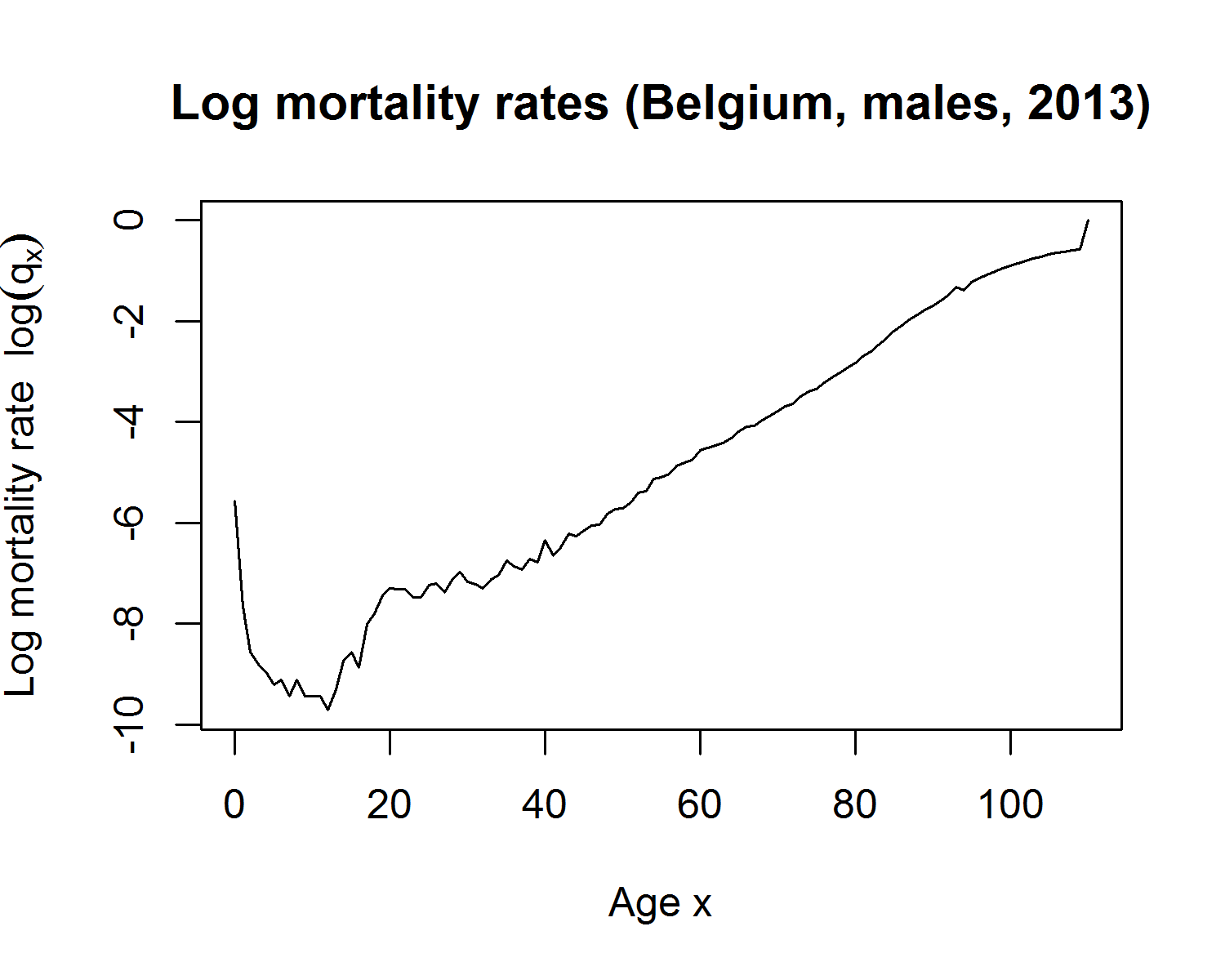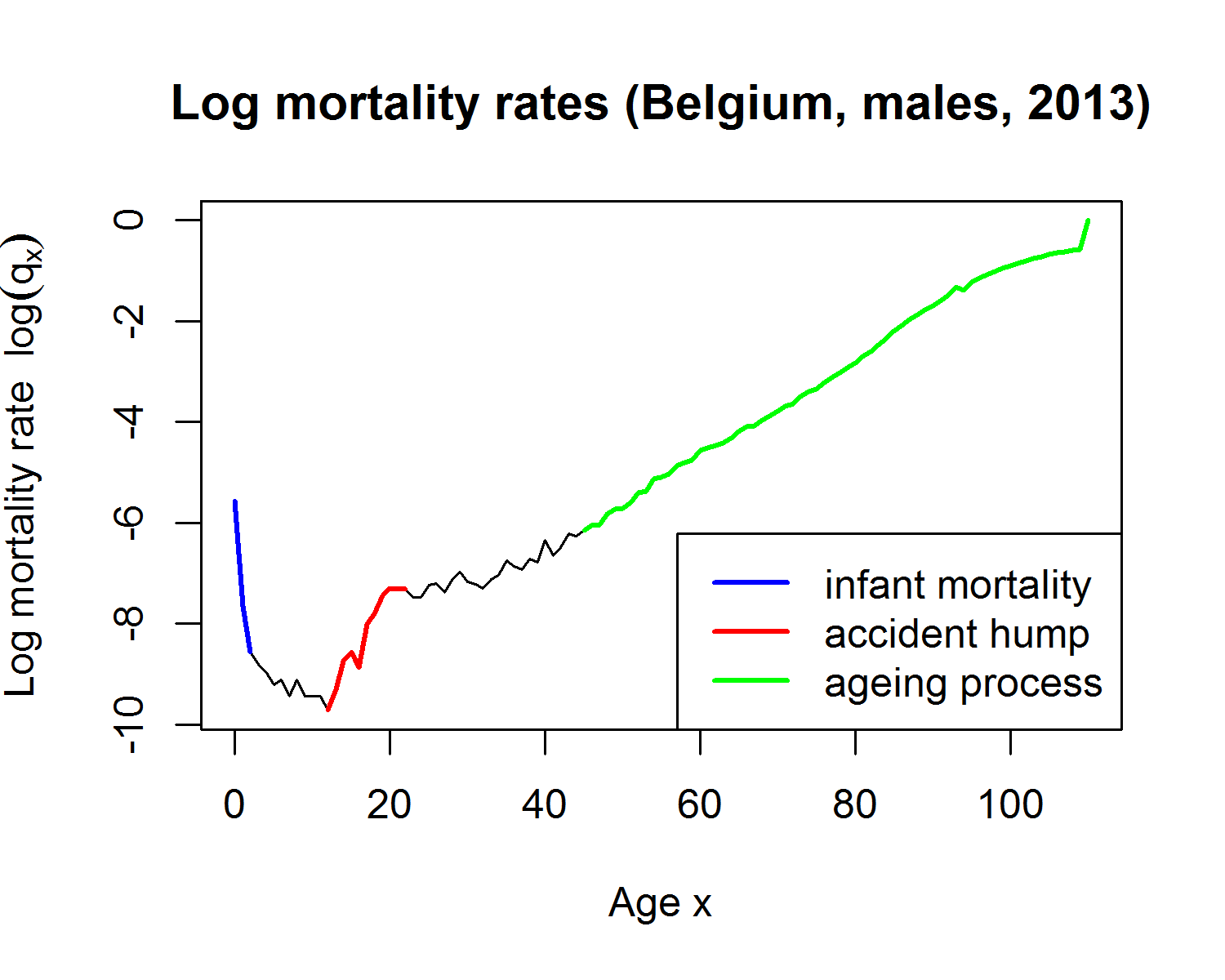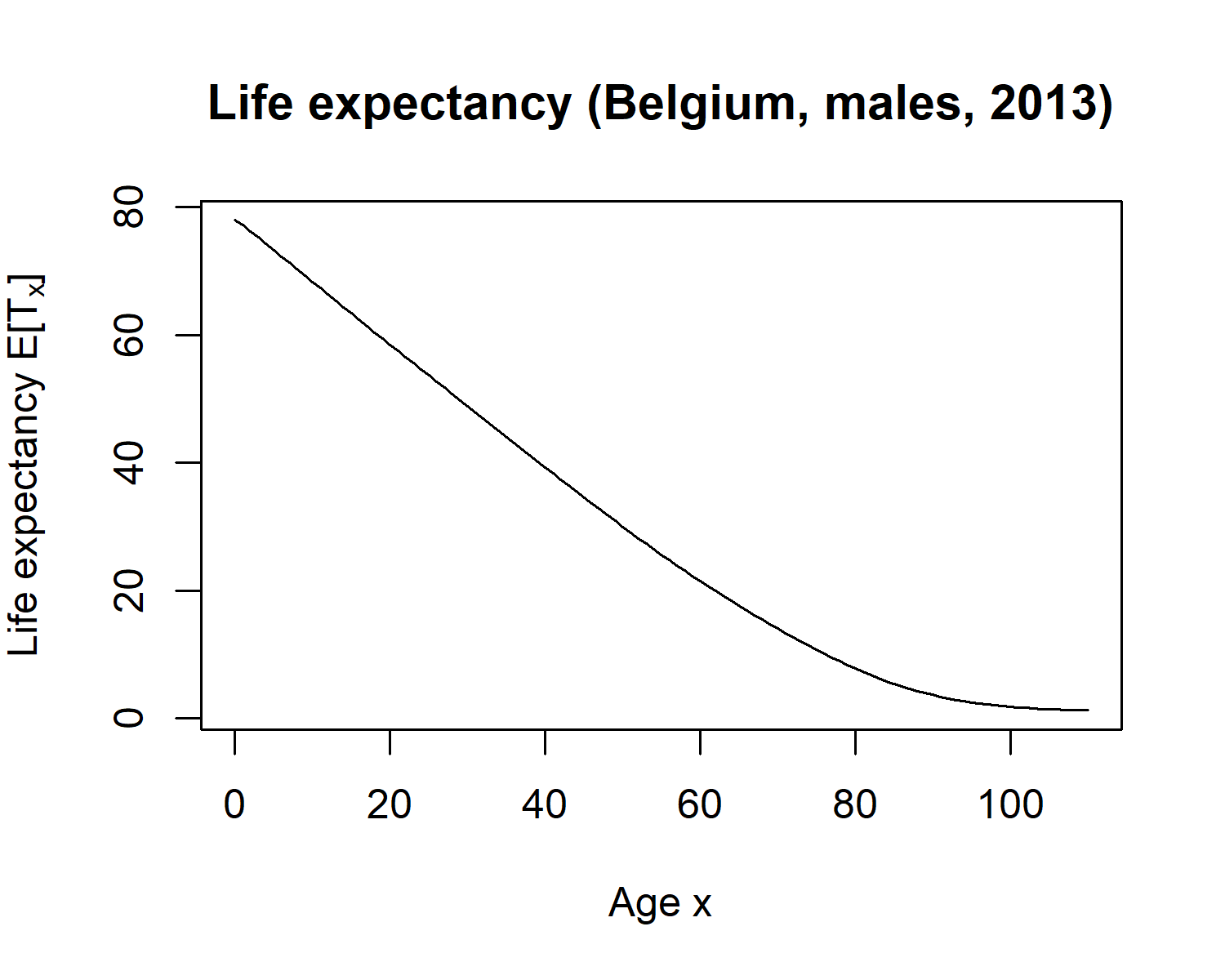Random future lifetime
Life Insurance Products Valuation in R

Katrien Antonio, Ph.D.
Professor, KU Leuven and University of Amsterdam
The random future lifetime
$(x)$ denotes an individual aged $x$ at this moment, with $x \geq 0$.
The random variable $T_x$ is the future lifetime of $(x)$.
Thus, age at death of $(x)$ is $x + T_x$.
The life table in R
Human Mortality Database (HMD, www.mortality.org).
life_tablecontains the period life table for males in Belgium of 2013.
head(life_table, 10)
age qx lx dx ex
1 0 0.00381 100000 381 77.95
2 1 0.00047 99619 47 77.24
3 2 0.00019 99572 19 76.28
4 3 0.00015 99553 15 75.30
5 4 0.00013 99538 13 74.31
6 5 0.00010 99525 10 73.32
7 6 0.00011 99514 11 72.32
8 7 0.00008 99504 8 71.33
9 8 0.00011 99496 11 70.34
10 9 0.00008 99485 8 69.34
Mortality rates and survival probabilities
The one-year probability of dying
$$ q_x = \text{Pr}(T_x \leq 1). $$
$\quad \;$ $q_x$ is the mortality rate at age $x$.
The one-year probability of surviving
$$ p_x = \text{Pr}(T_x > 1). $$
Thus, $p_x = 1 - q_x$.
Mortality rates of Belgian sportsmen in R
- Eden Hazard is a Belgian footballer who plays for Chelsea and is 27 years old.
age <- life_table$age
qx <- life_table$qx
qx[age == 27]
0.00062
qx[27 + 1]
0.00062
- Eddy Merckx is a Belgian cyclist who won the Tour de France 5 times and is 72.
qx[age == 72]
0.02631
qx[72 + 1]
0.02631
Picturing Belgian mortality rates $q_x$ in R
plot(age, log(qx), main = "Log mortality rates (Belgium, males, 2013)",
xlab = "Age x", ylab = expression(paste("Log mortality rate ", log(q[x]))),
type = "l")


The life expectancy
The (complete) expected future lifetime of $(x)$ is $E[T_x]$
For Eden Hazard who is 27 years old:
ex <- life_table$ex
ex[27 + 1]
51.74
- For Eddy Merckx who is 72 years old:
ex[72 + 1]
12.67
Picturing the life expectancy in R
plot(age, ex, main = "Life expectancy (Belgium, males, 2013)", xlab = "Age x",
ylab = expression(paste("Life expectancy E[", T[x], "]")), type = "l")

Let's practice!
Life Insurance Products Valuation in R

